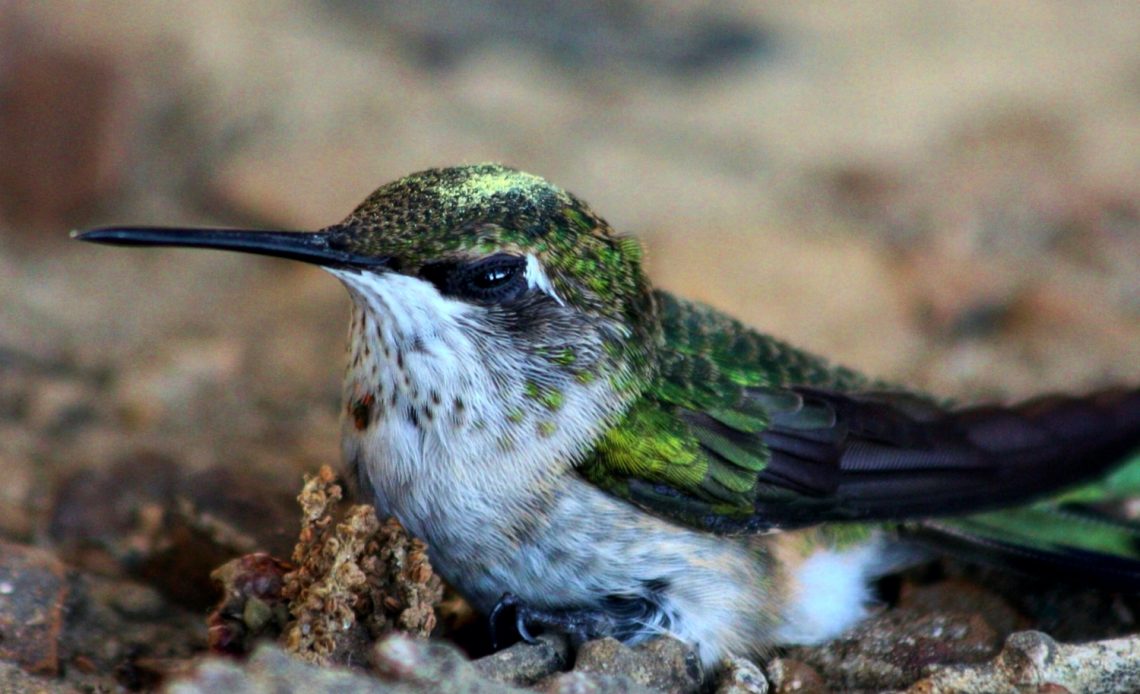

We’re here to help! Wild Yards is a completely free website that is 100% dedicated to helping you create a wildlife-friendly, sustainable yard. Read more
WildYards is reader-supported. When you buy a product through a link on our site, we may earn a comission. Every product is independently selected by our (obsessive) editors and our reviews are unbiased and objective. Read more about our mission or our privacy policy.
Hummingbirds are always on the move, searching for flowers, looking for flying insects to snack on, and chasing each other away from their feeders. Because hummingbirds are seemingly in constant motion, it can be unsettling to see one sitting still for a long period of time. If you find a hummingbird that appears to be in distress, you may be wondering what sick hummingbird behaviors you need to keep an eye out for, and what you can do to help the bird get back on its wings.
A few signs of illness in hummingbirds include lethargy, difficulty breathing, not eating or drinking, and not interacting with other hummingbirds. You may also notice a discharge from the bird’s mouth, nose, and eyes.
14 Sick hummingbird behaviors to look out for
Hummingbirds are energetic, flying back and forth all over your yard. So if you notice a hummingbird lagging behind and looking a little sickly, you should trust your gut. Keep an eye on them and watch out for the following sick hummingbird behaviors.
- Lack of energy
- Shaking
- Weight loss
- Diarrhea
- Hovering in place for a long time
- Dull, disheveled-looking feathers
- Patchy feather loss
- Not eating or drinking
- Sitting on the feeder or other perch for long periods of time
- Isolating itself from other birds
- Refusing to interact with other hummingbirds
- Erratic breathing pattern
- Breathing with beak open
- Discharge from the eyes, nostrils, or mouth
Hummingbirds are susceptible to a variety of illnesses — not just viral diseases, but bacterial and fungal infections as well.
If you suspect a hummingbird is sick, it may be struggling with one of these health conditions.
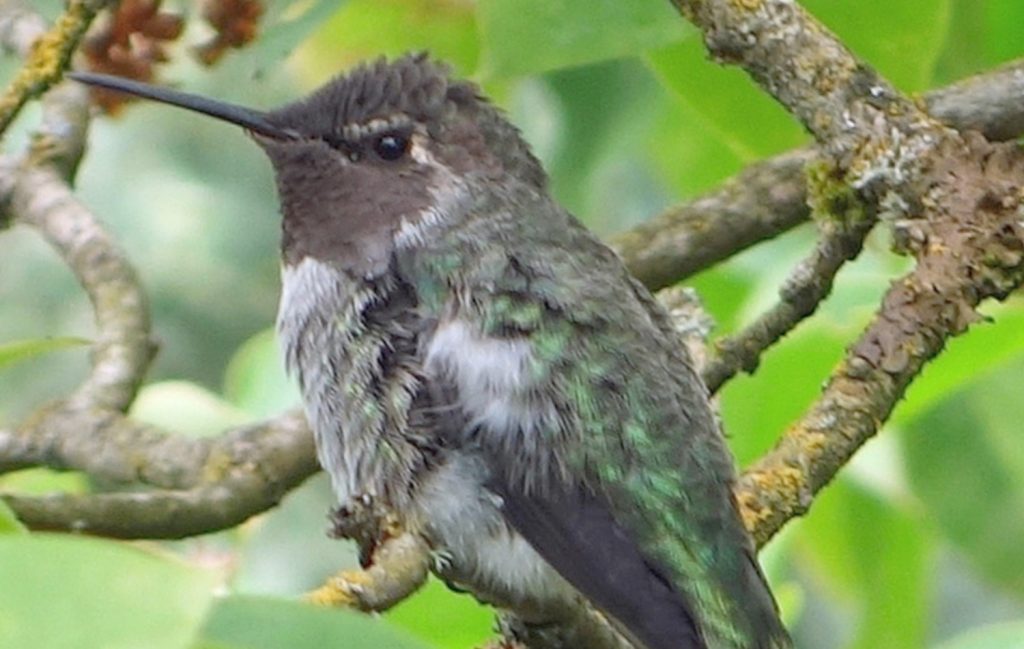
Candidiasis
Candidiasis is oral thrush, and, unfortunately, extreme cases can prove to be fatal to hummingbirds.
This potentially deadly disease infects the hummingbird’s tongue, resulting in white lesions and swelling that can make it nearly impossible for them to feed.
Hummingbirds often develop candidiasis after drinking nectar made with honey. Left out in the sun, honey quickly ferments, leading to a boom in bacterial and fungal populations.
Because candidiasis leads to tongue swelling, infected hummingbirds will have trouble breathing, often keeping their beaks open. They may perch on your feeder for hours. Some may try to feed, but they will be unable to.
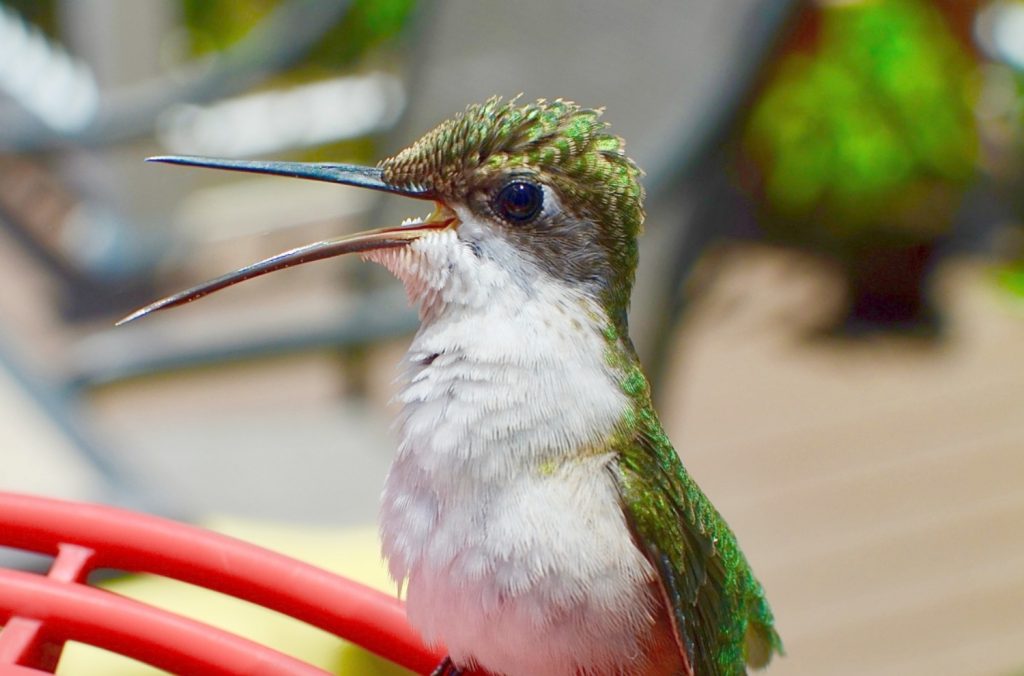
Aspergillosis
A pathogenic fungi, aspergillosis is airborne and can destroy a hummingbird’s gastrointestinal tract if inhaled.
Aspergillosis is commonly found on dirty hummingbird feeders. This pathogen thrives in unsanitary environments.
Hummingbirds that are suffering from an aspergillosis infection will have diarrhea and discharge around the nose and mouth.
This infection can also lead to weight loss, but it can be difficult to observe this sick hummingbird behavior in an individual, especially if you have multiple hummingbirds flying around your backyard.
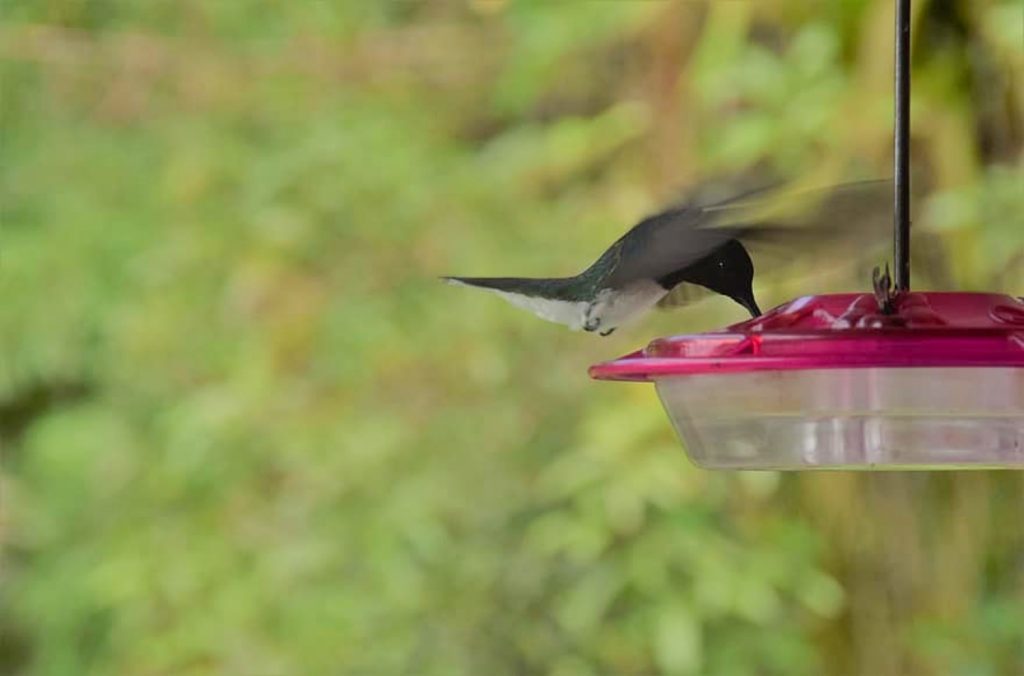
Salmonellosis
As is the case with aspergillosis, hummingbirds may develop salmonellosis after visiting an unsanitary feeder.
Hummingbirds that are suffering from salmonellosis may appear disheveled, with ruffled, unkempt feathers. They will also likely appear lethargic, avoiding interaction with other hummingbirds and, possibly, avoiding eating.
Salmonellosis infects the hummingbird’s digestive tract and can lead to diarrhea and weight loss. This is a serious illness that can kill the bird.
Salmonellosis is caused by the common bacterium, salmonella. So if you suspect a hummingbird has salmonellosis, proceed with caution, as it’s believed the illness can spread from birds to humans.
Avoid handling the bird if possible, and wash your hands immediately if you happen to touch it.
Avian Poxvirus
This viral disease passes from bird to bird, either from direct contact or by coming into contact with food sources and/or surfaces that an infected bird has touched. Mosquitoes can also transmit avian poxvvirus.
Avian poxvirus results in a small tumor in the mouth. Some birds also develop a tumor on their eyelids, feet, and legs.
In extreme cases, when the tumor severely interferes with the bird’s ability to feed, avian poxvirus can be deadly.
The good news is that this virus is relatively short-lived, lasting only 7 to 14 days before symptoms resolve. Even though avian poxvirus can make eating and drinking difficult for hummingbirds, it’s not usually fatal.
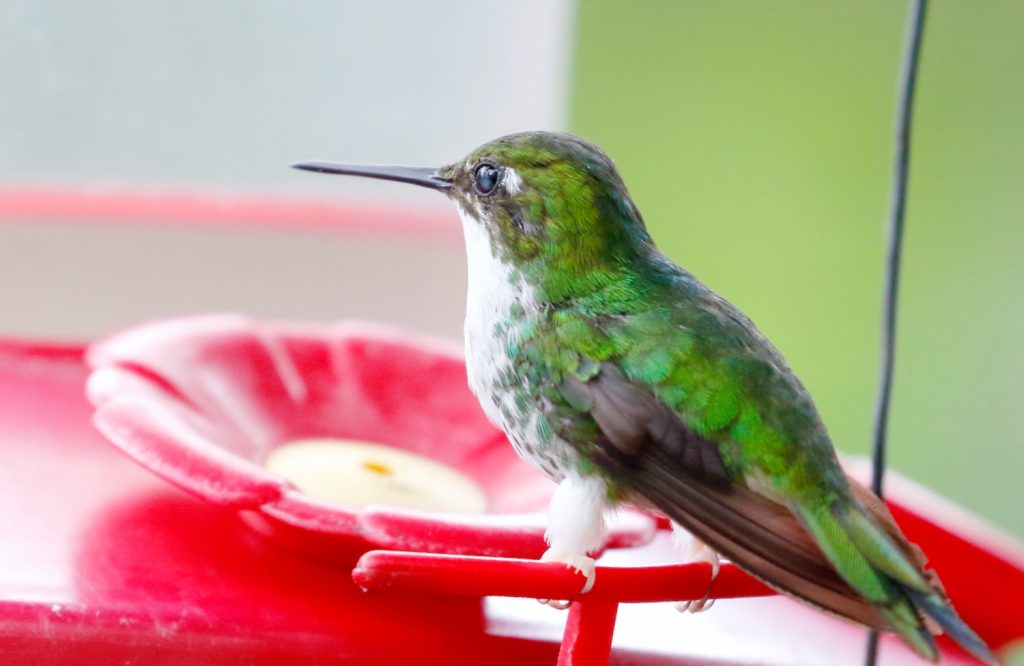
Collision trauma
Hummingbirds are skilled fliers, but they do bump into things sometimes. It’s not uncommon for hummingbirds to fly into windows. Often, they mistake their own reflection for other birds, and try to chase them off.
If your local hummingbirds are especially brave, they may even fly into you when you’re refilling your feeders. It’s happened to us a time or two. Though the collisions were never serious, they did surprise us — and give us a neat story to share!
A collision can leave a hummingbird feeling dazed and disoriented. They are tiny, after all, and given that they fly at a rate of around 25 miles per hour if they do happen to bump into something, it can leave them slightly concussed.
A hummingbird that’s suffering from collision trauma may sit still on its perch for a long time, and appear lethargic. The bird probably won’t interact too much with other hummingbirds.
In some cases, you may find the hummingbird on the ground next to the object it flew into, whether it’s the side of your house or your newly waxed car. They may appear to be sleeping.
Collision trauma can be minor or severe. Birds typically appear disoriented, weak, lethargic, and may have ruffled feathers.
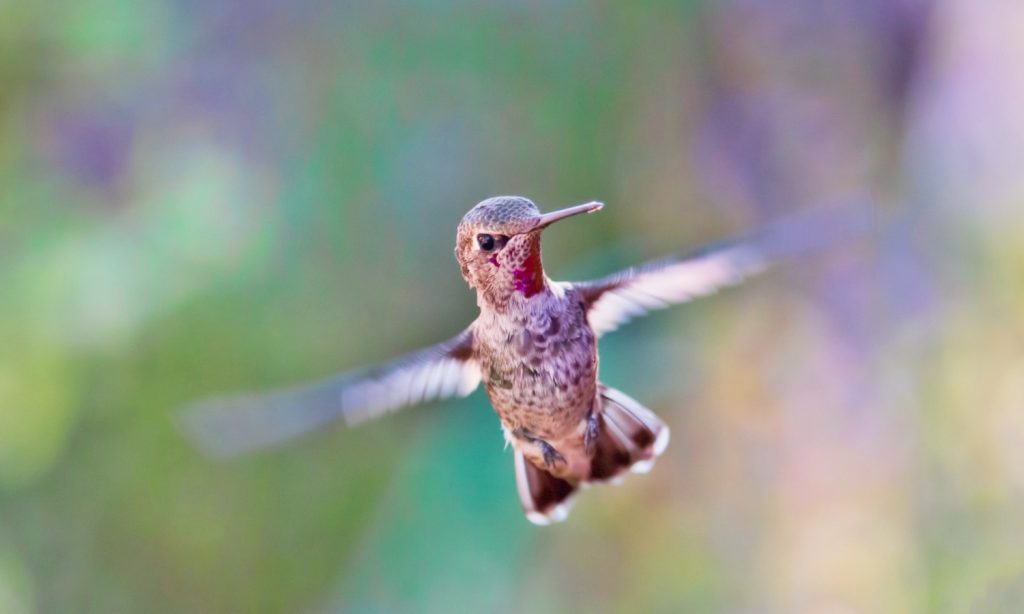
Exhaustion
Occasionally, the sick hummingbird behaviors you observe in a bird aren’t caused by illness at all. But, rather, exhaustion.
Hummingbirds can cover astonishing distances in an incredibly short amount of time.
During migration, hummingbirds can travel across the Gulf of Mexico, which is a distance of around 500 miles, in just 18 to 24 hours.
It’s no wonder they get tired sometimes!
Exhausted hummingbirds will appear weak and lethargic, with dull plumage and ruffled feathers. You may even find them lying on the ground.
Tired hummingbirds may be unable to feed, and will seldom interact with other hummingbirds. They’ll likely seek out solitary hideouts, where they can safely recuperate.
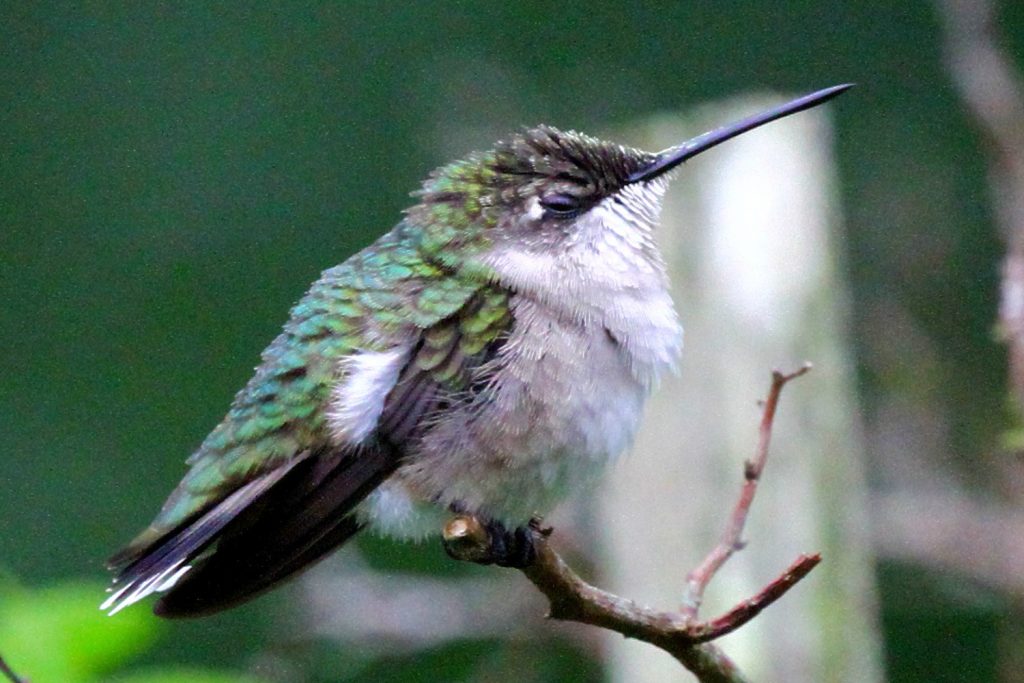
What should you do if you find a sick hummingbird?
Hummingbirds are very delicate, and caring for a sick hummingbird is something that the average citizen isn’t equipped to deal with.
Approaching a sick hummingbird or attempting to handle it is not advised. Distressing a sick hummingbird could exhaust it further, and may even lead to death.
The very best thing that you can do if you notice sick hummingbird behavior is to contact a wildlife refuge as quickly as possible. Use this website to find a rescue center near you. Some universities are also willing to assist in these situations.
Getting in touch with professionals is absolutely critical if you notice sick hummingbird behaviors in an individual bird. They will be able to diagnose the hummingbird and provide it with the appropriate medical care.
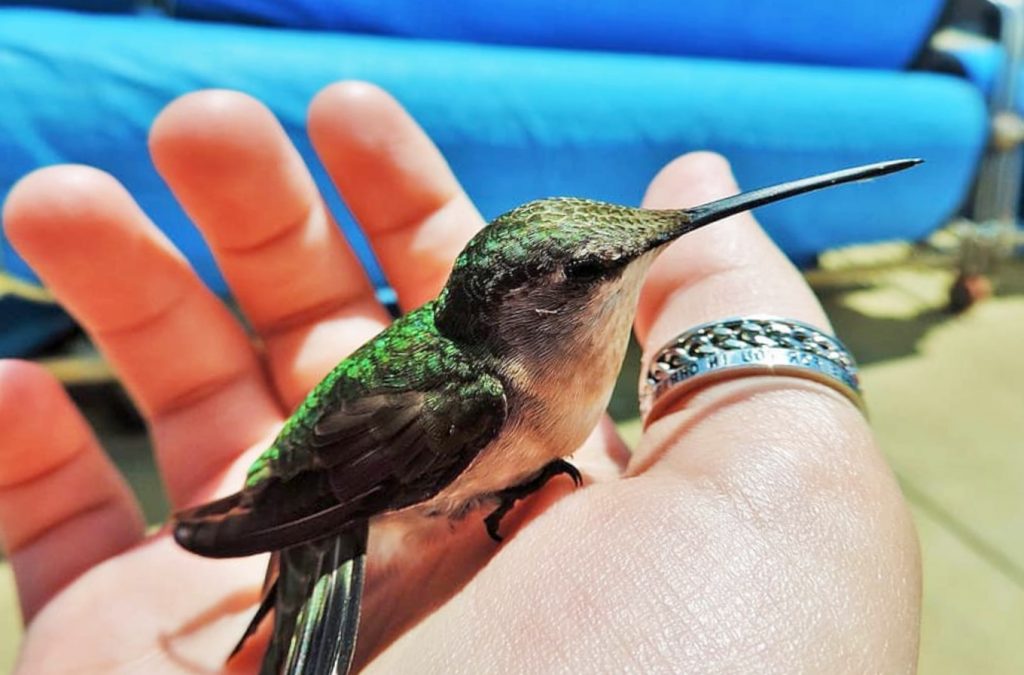
How can you help an exhausted hummingbird recover?
If you believe the hummingbird in question is simply suffering from exhaustion or collision trauma, there are a few things you can do to help.
Try offering the bird some food. Mix up a batch of homemade nectar and use an eye dropper to offer it to the hummingbird. It’s always a good sign if the hummingbird is willing to eat, but don’t force the bird to drink it down.
You can also make a shelter for the hummingbird by lining a shoebox with shredded paper or straw. A dark hiding place will help the hummingbird stay calm so it can recover.
Gently place the hummingbird into the box, and avoid jostling it around too much. Cover the box with the lid, and set it in a safe place, where pets and potential predators won’t be able to get to it.
Leave the box undisturbed for 15 minutes, then take it to an open area and open it up. If the hummingbird has recovered, it will fly away. If not, set the box back for another 15 minutes, then try again.
If, after an hour, the hummingbird is showing no signs of improving, it’s time to contact a wildlife center for assistance.
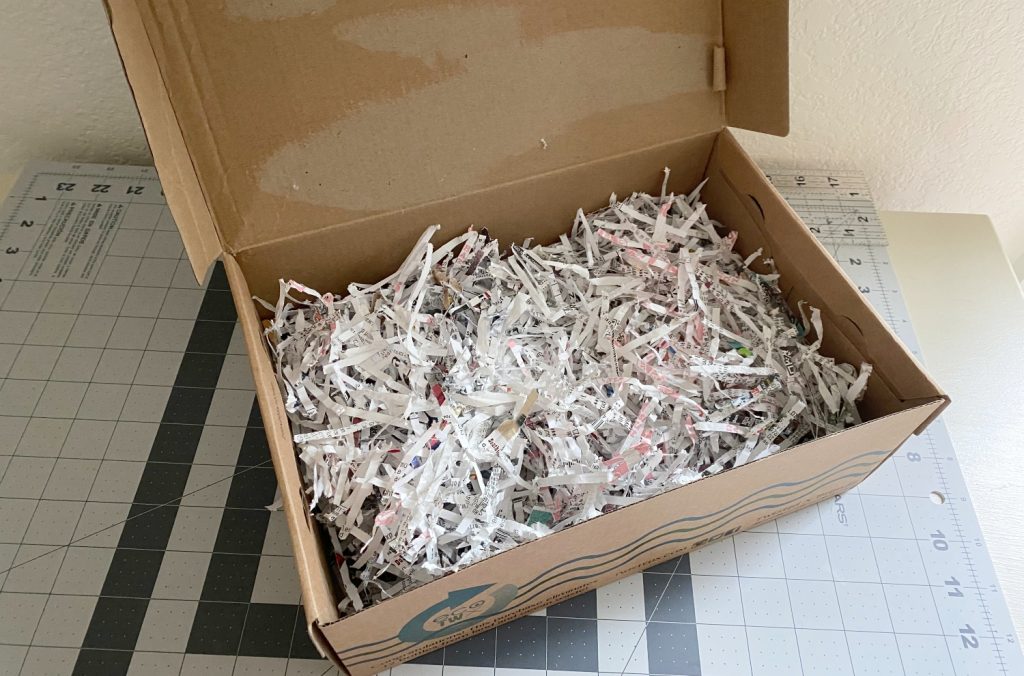
Tips for keeping your local hummingbirds healthy
At the end of the day, hummingbirds are wild animals, so you can only do so much to keep them from getting sick.
That said, there are a few precautions that you can take to prevent your flock from exhibiting signs of sick hummingbird behavior.
Start by cleaning your feeders once a week. Wash the feeders out with soapy water, then douse them in boiling water for good measure and allow them to air dry before refilling them.
Use only white sugar for hummingbird nectar. Remember, honey can turn your hummingbird nectar into a breeding ground for deadly bacteria. So to keep your hummingbirds healthy, only make hummingbird nectar with filtered, boiled water and white sugar. Replace the water every 3 days.
Place decals on your windows, or install whirligigs and windchimes nearby, to prevent hummingbirds from flying into the sides of your home.
Provide your hummingbirds with houses and nesting material, to help them feel at home in your yard. And be sure to plant plenty of hummingbird-favorite flowers, like lantana, roses, and crape myrtles, to give hummingbirds a reliable food source and plenty of places to hide.
With a little careful consideration, you can do your part to support local hummingbirds and keep them healthy so you can enjoy their company in your backyard for many years to come.
